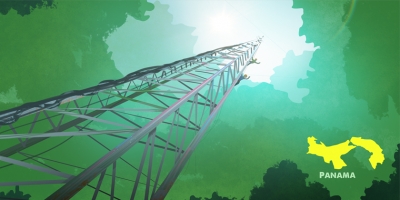
If you’ve bought a plane ticket recently, you’ve probably had the option to pay a few extra dollars to offset your carbon emissions. That money might go toward planting some trees… but how many trees? Researchers at the Smithsonian Tropical Research Institute are trying to answer this very question by hand-measuring trees, weighing wood, and climbing to the top of the canopy. We tag along to see how carbon is measured, and why so much ends up in tropical forests.
Guests:
- Joshua Tewksbury, director of the Smithsonian Tropical Research Institute in Panama
- Helene Muller-Landau, senior scientist at the Smithsonian Tropical Research Institute researching tropical forests and ecosystems, leader of ForestGEO Global Carbon Program
- David Mitre, research manager for ForestGEO at the Smithsonian Tropical Research Institute
- Sergio dos Santos, project manager for the Smithsonian Tropical Research Institute’s Hydro-Meteorological and Oceanographic Monitoring Program in Panama
- Luisa Fernanda Gómez Correa, intern at the Forest Carbon Lab at the Smithsonian Tropical Research Institute
- Eline De Loore, graduate student at Ghent University conducting research at the Smithsonian Tropical Research Institute
Smithsonian Links:
- Scientists and forest research sites within the Smithsonian’s Forest Global Earth Observatory (ForestGEO) and the global network GEO-TREES are working on a large-scale, long-term study forests by collecting and comparing data from around the world. Find out more about their shared mission and methodology.
- Read more about the process behind the Eddy Covariance system and carbon flux measurements from the Smithsonian Tropical Research Institute.
Sign up to unlock the full Sidedoor experience!
Get bonus content, news, and updates in your inbox.
Please enter a valid email address.
